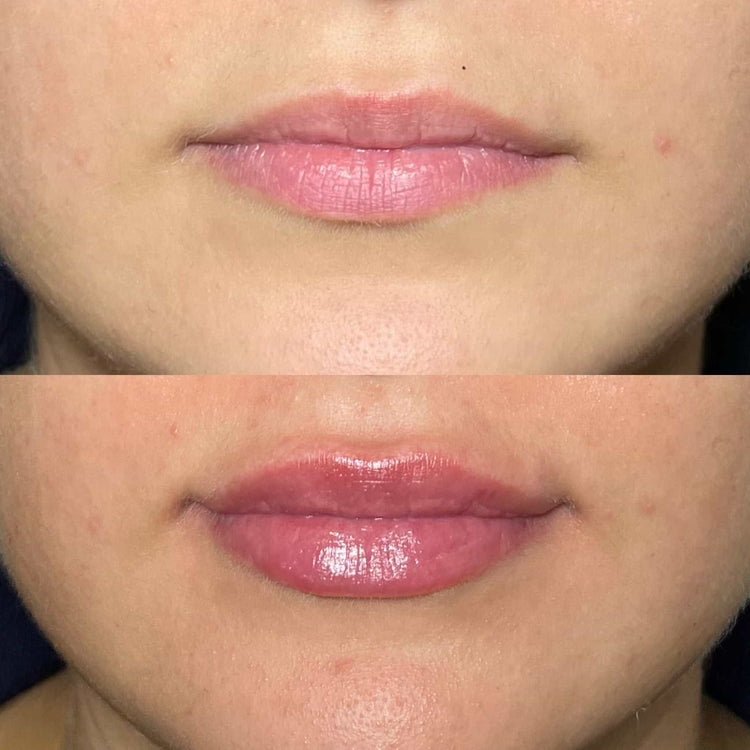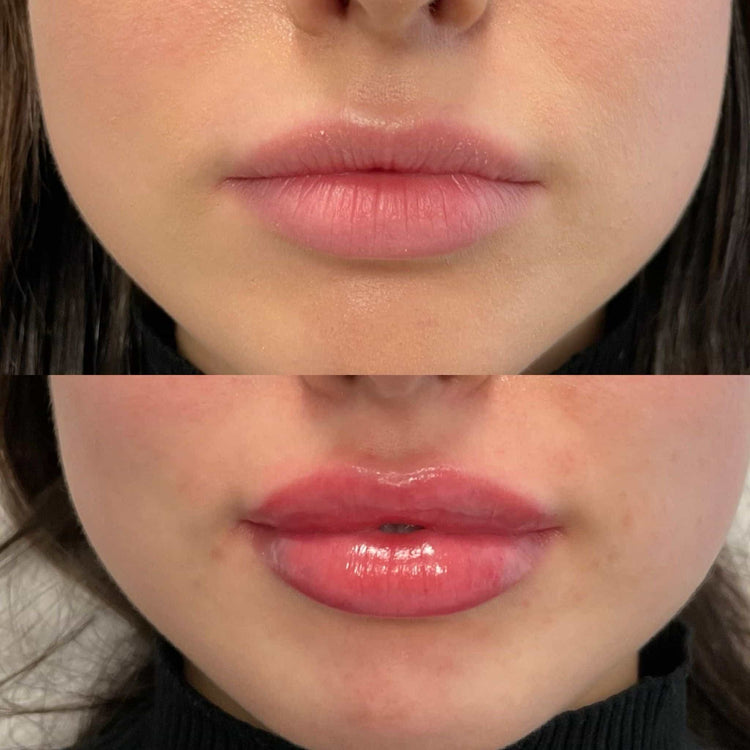Risks of At-Home Dermal Filler Injections
While the convenience of at-home beauty treatments is alluring, injections of dermal fillers carry significant risks that necessitate professional administration. Injecting substances into one’s own skin can have serious consequences, including infections, tissue damage, and uneven or unnatural results.
Unsterile Environment
One of the most pressing dangers associated with at-home dermal filler injections is the risk of infection. A sterile environment is crucial when administering any injectable treatment to prevent the introduction of bacteria into the body. At home, it’s nearly impossible to replicate the rigorous sterilization protocols found in medical settings, leaving you vulnerable to potentially life-threatening infections.
Furthermore, injecting dermal fillers without proper training and knowledge can lead to tissue damage. Incorrect placement or improper dosage can result in lumps, bumps, swelling, and even necrosis (tissue death). Dermal fillers are designed to be injected into specific layers of the skin, and an untrained individual may accidentally inject them too deeply or superficially, causing irreparable harm.
Finally, attempting at-home dermal filler injections significantly increases the likelihood of achieving uneven or unnatural results. Experienced professionals have a deep understanding of facial anatomy and possess the expertise to customize treatment plans for optimal outcomes. Without this knowledge, you risk ending up with an aesthetically displeasing appearance that may require corrective procedures.
Lack of Training and Experience
A lack of proper training and experience is a major risk factor associated with at-home dermal filler injections. Dermal fillers are potent substances that require precise injection techniques to achieve desired results and minimize complications.
Individuals who attempt at-home injections often lack the necessary anatomical knowledge to accurately identify target areas and inject the filler at the correct depth. This can result in uneven distribution, lumps, bumps, or other undesirable outcomes.
Moreover, untrained individuals may not understand the specific properties of different dermal fillers and their potential side effects. Improper selection or dosage of a filler can lead to adverse reactions, such as inflammation, allergic responses, or long-lasting disfigurement.
Incorrect Product Selection
Choosing the wrong type of dermal filler for your desired outcome can drastically affect the results and potentially cause harm.
Dermal fillers come in various formulations, each designed for specific purposes. Some are meant to plump up lips, while others are better suited for addressing wrinkles or restoring volume loss in the cheeks. Using an inappropriate filler can lead to unnatural-looking results, lumps, or even complications like tissue damage.
Understanding the nuances of different fillers requires expertise and knowledge gained through proper training. An unqualified individual might unknowingly select a filler unsuitable for their intended use, putting themselves at risk of unsatisfactory outcomes and potential adverse reactions.
Improper Injection Technique

Improper injection technique is a major concern when it comes to at-home dermal filler injections.
Dermal fillers are not simply injected anywhere on the skin; they need to be placed with precision into specific layers to achieve desired results and minimize complications.
Without proper training, individuals attempting at-home injections may not understand these anatomical nuances and could inject the filler too deeply or superficially.
This can result in lumps, bumps, unevenness, or even tissue damage.
Furthermore, incorrect injection angles can lead to undesirable results such as migration of the filler or distortion of facial features.

Overfilling and Complications
At-home dermal filler injections carry significant risks, primarily due to a lack of sterile environment control, improper training, and the potential for overfilling. Injecting fillers into oneself without proper knowledge and expertise can lead to infections, tissue damage, and aesthetically displeasing results.
Overfilling is a major concern with at-home dermal filler injections. Without a trained eye, it’s easy to inject too much filler, leading to unnatural-looking results such as swollen cheeks or an over-inflated appearance. This can be difficult to correct and may require invasive procedures to remove excess filler.
Complications from at-home dermal filler injections can range from mild discomfort and bruising to severe issues like vascular occlusion (blockage of blood vessels) or tissue necrosis. Vascular occlusion is a life-threatening complication that occurs when a blood vessel becomes blocked, potentially leading to permanent tissue damage.
Legal and Ethical Considerations
The allure of at-home beauty treatments is undeniable, but certain procedures, such as dermal filler injections, require the expertise of trained professionals. Injecting substances into one’s own skin carries significant legal and ethical implications.
Illegal Practice
Dermal fillers are powerful substances that should only be administered by qualified medical professionals.
- Injecting dermal fillers oneself can result in severe complications, including infections, tissue damage, and uneven or unnatural results.
- The lack of sterile environment control at home significantly increases the risk of infections.
- Improper injection technique can lead to lumps, bumps, and distortion of facial features.
- Using the wrong type of dermal filler for your desired outcome can cause harm and unsatisfactory results.
At-home dermal filler injections pose serious legal and ethical concerns due to the potential for harm and lack of accountability.
Liability and Medical Negligence

Dermal fillers are potent substances that should only be administered by qualified medical professionals. Injecting these substances oneself carries significant legal and ethical implications.
- Injecting dermal fillers oneself can result in severe complications, including infections, tissue damage, and uneven or unnatural results.
- The lack of sterile environment control at home significantly increases the risk of infections.
- Improper injection technique can lead to lumps, bumps, and distortion of facial features.
- Using the wrong type of dermal filler for your desired outcome can cause harm and unsatisfactory results.
The potential for harm and lack of accountability make at-home dermal filler injections ethically questionable. Medical professionals undergo extensive training to understand facial anatomy, injection techniques, and potential complications.
They are also bound by ethical codes that prioritize patient safety and well-being.
Liability in case of adverse events is another critical consideration. If a person injects themselves with dermal fillers and experiences complications, determining liability becomes complex. Who is responsible for the consequences – the individual who injected themselves or the manufacturer of the filler?
- Medical Negligence: If a qualified medical professional performs dermal filler injections negligently, causing harm to the patient, it could be considered medical malpractice.
- Product Liability: If a dermal filler product is defective or causes adverse reactions due to manufacturing issues, the manufacturer may be liable for any damages resulting from its use.
The legal landscape surrounding at-home cosmetic procedures is still evolving, and specific regulations vary depending on jurisdiction. However, the potential risks and ethical implications associated with at-home dermal filler injections are undeniable.
Alternatives to At-Home Filler Treatments
While the convenience of at-home beauty treatments is appealing, certain procedures, like dermal filler injections, carry significant risks that necessitate professional administration.
Professional Dermal Fillers
Dermal fillers can effectively rejuvenate skin and enhance facial features, but it’s crucial to understand the risks associated with at-home injections.
- Consider consulting a board-certified dermatologist or plastic surgeon for personalized advice and treatment.
- Explore alternative non-invasive treatments like microneedling, chemical peels, or laser therapies, which can address various skin concerns without the risks associated with injections.
- If you’re determined to use dermal fillers, prioritize safety by obtaining them from a reputable manufacturer and ensuring sterile handling procedures are strictly followed.
Other Aesthetic Options
While dermal fillers offer potential benefits for enhancing facial aesthetics, the risks associated with at-home injections are significant. Exploring alternative aesthetic options can provide safer and equally effective ways to achieve desired results.
- Microneedling: This minimally invasive procedure uses fine needles to create micro-injuries in the skin, stimulating collagen production and improving skin texture, tone, and elasticity.
- Chemical Peels: Chemical peels involve applying a solution to exfoliate the top layers of skin, revealing smoother, brighter skin underneath. Different types of peels address specific concerns, such as acne scars, hyperpigmentation, and wrinkles.
- Laser Therapies: Various laser treatments can target specific skin concerns like wrinkles, age spots, acne scars, and vascular lesions, promoting collagen production and improving skin texture.
- Radiofrequency Treatment: This non-invasive treatment uses radiofrequency energy to heat the deeper layers of the skin, stimulating collagen production and tightening loose skin.
- Hyaluronic Acid Serums and Moisturizers: While not a replacement for dermal fillers, topical hyaluronic acid can hydrate the skin, plump up fine lines, and improve overall skin appearance.
Book your cheek filler treatment today with Dr. Laura Geige at It’s Me & You Clinic
- Profhilo Treatment Near Forest Green, Surrey - May 31, 2025
- Vista Edge Vape Oil Leakage: How To Prevent And Fix It - May 31, 2025
- How To Recognize And Heal From The Damaging Effects Of Love Bombing - May 31, 2025
